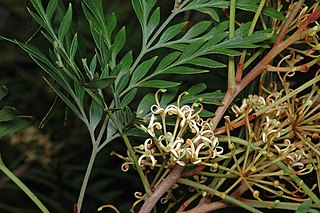
New Caledonia is a sui generis collectivity of overseas France in the southwest Pacific Ocean, south of Vanuatu, about 1,210 km (750 mi) east of Australia, and 17,000 km (11,000 mi) from Metropolitan France. The archipelago, part of the Melanesia subregion, includes the main island of Grande Terre, the Loyalty Islands, the Chesterfield Islands, the Belep archipelago, the Isle of Pines, and a few remote islets. The Chesterfield Islands are in the Coral Sea. French people, especially locals, call Grande Terre "Le Caillou".

Nouméa is the capital and largest city of the French special collectivity of New Caledonia and is also the largest francophone city of Oceania. It is situated on a peninsula in the south of New Caledonia's main island, Grande Terre, and is home to the majority of the island's European, Polynesian, Indonesian, and Vietnamese populations, as well as many Melanesians, Ni-Vanuatu and Kanaks who work in one of the South Pacific's most industrialised cities. The city lies on a protected deepwater harbour that serves as the chief port for New Caledonia.

Stenocarpus is a genus of about 22 species of flowering plants in the family Proteaceae. They are trees or shrubs with variably-shaped leaves, zygomorphic, bisexual flowers, the floral tube opening on the lower side before separating into four parts, followed by fruit that is usually a narrow oblong or cylindrical follicle.

William Grant Milne, was a Scottish botanist.
Stenocarpus dumbeensis was a species of plant in the family Proteaceae. It was endemic to New Caledonia.
Stenocarpus heterophyllus is a species of plant in the family Proteaceae. It is endemic to New Caledonia. It is threatened by habitat loss.
Stenocarpus villosus is a species of plant in the family Proteaceae. It is endemic to New Caledonia. It is threatened by habitat loss.

The Labour Party is a New Caledonian political party established on 18 November 2007. It is radically pro-independence and backed by the trade union Union of Kanak and Exploited Workers (USTKE). It is considered close to the French alterglobalization movement led by José Bové.

The New Caledonia national rugby union team represents New Caledonia in rugby union. The team has been playing international rugby since the 1960s. All their matches have been against other teams from Oceania.
A cricket tournament at the Pacific Games, previously the South Pacific Games, was introduced in 1979 and was played intermittently at games in the 1980s and 1990s, depending on the facilities of the host nation. Since 2003, cricket has featured at every Pacific Games. Detailed records of the tournaments prior to 2003 have not been kept and beyond knowing what teams won the gold and silver medals at each Games, little is known with certainty of the first three tournaments.

The 2nd constituency of New Caledonia is a French legislative constituency in New Caledonia.
Philippe Gomès is a New Caledonian politician and, from 5 June 2009 to 11 March 2011, President of the Government of New Caledonia, an overseas territory of France in the Pacific Ocean. He served as a member of the National Assembly from 2008 until 2022.

Stenocarpus salignus, known as the scrub beefwood is an Australian rainforest tree in the family Proteaceae. Found in warmer rainforests on the coast and ranges. It is often found in warm temperate rainforest on poorer sedimentary soils, or on volcanic soils above 750 metres above sea level. It was originally described by the botanist Robert Brown in 1810.

Stenocarpus sinuatus, known as the firewheel tree, is an Australian rainforest tree in the family Proteaceae. The range of natural distribution is in various rainforest types from the Nambucca River in New South Wales to the Atherton Tableland in tropical Queensland. Stenocarpus sinuatus is widely planted as an ornamental tree in other parts of Australia and in different parts of the world.

Stenocarpus cryptocarpus, commonly known as the giant-leaved stenocarpus, is a species of flowering plant in the family Proteaceae and is endemic to north Queensland. It is a tree with buttress roots at the base, simple, mostly elliptical adult leaves, groups of cream-coloured flowers and narrow oblong follicles.

Stenocarpus umbelliferus is a species of flowering plant in the family Proteaceae. It is endemic to New Caledonia. It has a prostrate or upright habit, growing up to 5 metres in height. Stems are flattened when young, later becoming rounded. The leaves are thick and leathery with a slightly wavy margin. These may be ovate, elliptic, lanceolate or spathulate in shape with petioles that are 3 to 12 mm long. White, cream or pale yellow flowers occur in groups of 3 to 8 per umbel. These are followed by dark-coloured glabrous follicles that are 25 to 80 mm long and 3 to 5 mm wide.

Urera trinervis (Hochst.) Friis & Immelman is a softly woody dioecious liane, sometimes epiphytic, climbing to 20 m, often to the canopy and hanging in festoons. It is one of some 44 species of Urera belonging to the nettle family Urticaceae. It is known in English as the tree climbing-nettle or climbing nettle.
Stenocarpus verticis is a species of flowering plant in the family Proteaceae and is endemic to northern Australia. It is a tree with elliptic or lance-shaped adult leaves and groups of cream-coloured flowers covered with woolly, rust-coloured or grey hairs.

Stenocarpus davallioides, commonly known as the fern-leaved stenocarpus, is a species of flowering plant in the family Proteaceae and is endemic to north Queensland. It is a tree with simple or pinnate adult leaves, groups of creamy-green flowers and narrow oblong follicles.

Persoonia trinervis is a species of flowering plant in the family Proteaceae and is endemic to the south-west of Western Australia. It is an erect, sometimes spreading shrub with densely hairy young branchlets, spatula-shaped or lance-shaped leaves with the narrower end towards the base, and densely hairy yellow flowers.














